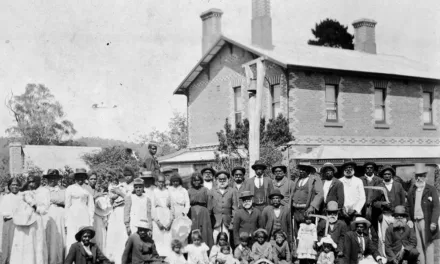Phil Lavelle
Anzac Day is a solemn day of reflection for all of us, particularly those of us who have served in our Australian Defence Force. Those who serve are acutely aware of the legacy created by those who went before us. It is a history that is embedded in us.
I joined the Army Reserve, then known as the Citizens’ Military Force in January 1975. I was 17. I am now retired from the ADF. Today I want to reflect on the changes in the defence environment that I have seen over my career, and on some of the things that have not and will not change.
I knew from the start that the CMF was a stepping stone for me as I intended joining the Royal Australian Air Force, but I was too young for entry as aircrew. I was rather ignorant of global affairs at the time. My time in the CMF certainly increased my knowledge of the Vietnam War as all of the unit staff were Vietnam veterans. It was a valuable period in my development as I started to develop an understanding of how outside influences could have such a dramatic impact on life in Australia.
In May of 1976 I joined the RAAF to become a navigator. Thinking back over my yearlong training, the thing that strikes me most is the technological leaps that have been made since then.
In training to be a navigator, I learned the techniques that were in use during World War 2. There was no GPS. The advent of the digital age was still some time off. Although radio beacons to assist with navigation had been developed, most of my flying time was spent over the ocean, so I relied on a sextant to observe the sun, moon and stars. Today, the RAAF relies entirely on GPS. They do not even have navigators!
When I completed my training, I was sent to fly on P3 Orions, an aircraft used to support navy operations and to observe what was happening in the waters around Australia. The main issue for us was the Cold War. No shooting, but plenty of aggressive talking and posturing when the opportunity arose. We recently heard of an Australian P8 Poseidon (the P3 replacement) being intercepted and harassed by Chinese fighter aircraft. The posturing and aggression continues but with different protagonists.
While Australia was geographically remote from most Cold War activities, our involvement did increase when Iran and Iraq went to war in 1980. With a global concern about oil supply, both the Soviets and the US took a very keen interest in the war and deployed significant naval forces. As well as providing naval assets to support the US, Australia set up a permanent P3 base in Malaysia to monitor and track Soviet naval assets.
Of particular interest were Soviet nuclear powered submarines. Enormous resources were devoted to maintain tracking of those submarines because losing contact was just not an option. Even in a non-combat environment, these submarines provoked a response and resource allocation that was far beyond any other type of asset.
Since the Cold War ended, the Australian Defence Force has led a multinational force to re-establish order in a newly independent East Timor, participated in conflicts in the Middle East and Afghanistan and undertaken numerous peace keeping operations and disaster relief operations at home and abroad.
For a time, the US enjoyed a monopoly on superpower status. However, there is another rising powercompeting with the US. There seems to be consistent strong talk from both parties and their military assets bump up against each other from time to time. Our last major conflict is only a few years behind us but, once again, the world is facing considerable uncertainty.
Despite the changes in the defence environment over my career, the one constant has been the people who serve in the ADF. When I first joined, I found a professional organisation staffed by dedicated people who were prepared to give up a regular life, making personal sacrifices on a daily basis to ensure the job was done. Even in peace time, a career in the military involves long hours of work, long periods of time away from home for training, exercises and operations and frequent moves, usually interstate. That is simply the nature of the business and it affects not only the serving members, but also their families. Involvement in conflicts adds a new and heightened dimension of risk, stress and impact on defence force personnel and their families. The ADF continues to suffer tragic losses in operations although, thankfully, not on the same scale as that experienced in previous wars.
We mourn those who were lost. And we must remember and support those who were injured and damaged. Nobody comes away from military operations unchanged.
I am immensely proud to have served my nation for 40 years. I was only one of many who have gone before, who continue to serve today and who will serve in the future. Have no doubt that we will continue to need a highly trained and well equipped defence force consisting of strong, determined, intelligent people prepared to make sacrifices, so that we may continue to enjoy our freedoms .
Despite our hopes and the best efforts of diplomats and leaders, there will be future conflicts. There will be more lost, injured and damaged service personnel. Along with our current veterans, they and their families will need and will deserve our continued support and gratitude.
Lest we forget.
Phil Lavelle is retired from the RAAF and lives in Daylesford. This is an edited version of an address he gave at the Eganstown Memorial Service on Anzac Day, 2003.
Open Arms Veterans & Families Counselling Service provides free and confidential counselling and support for current and former ADF members and their families. They can be reached 24/7 on 1800 011 046 or visit the Open Arms website for more information.
For more information on the meaning of Anzac Day and its history, visit the Department of Veterans’ Affairs Anzac Portal.











